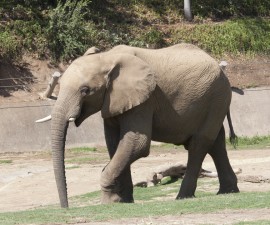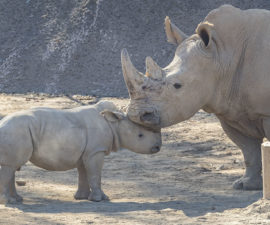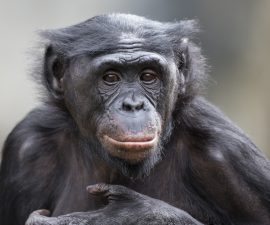Spring typically brings many animal births and visitors to the San Diego Zoo and the Safari Park. This past spring, however, was different. For the first time in our history, the Zoo and Safari Park temporarily closed to the public for an extended time, due to the COVID-19 pandemic. However, the vernal equinox, marking the start of spring, still arrived, as did a bloom of baby animals. Here are some blessed events that happened this spring that are worth celebrating.
BY Wendy Perkins
Photography by Ken Bohn
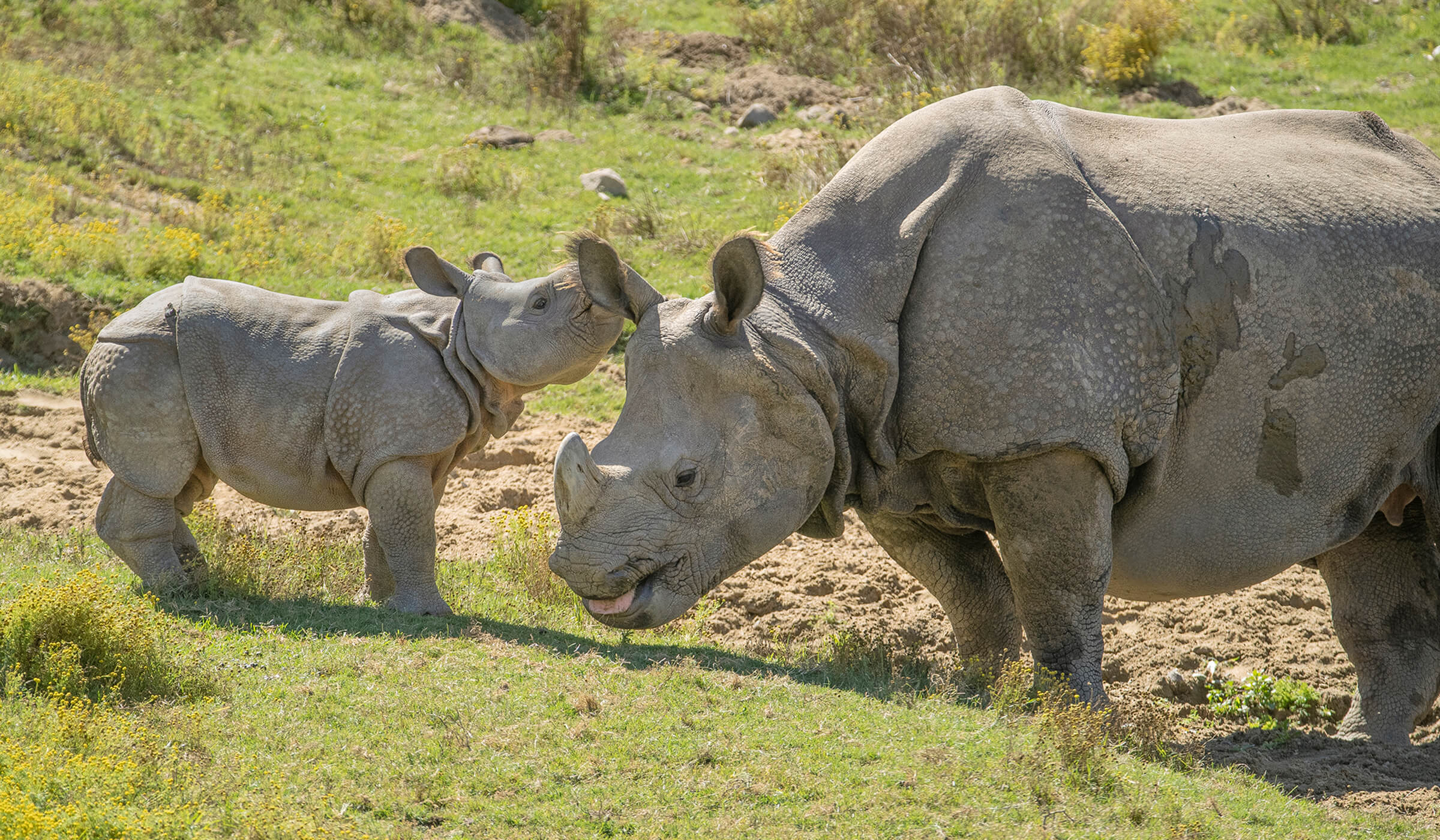
Big Baby Hooves
In the Asian field habitat at the Safari Park, our greater one-horned rhino population grew by two. Mother rhinos Asha and Tanaya gave birth to their calves just over two weeks apart, on March 25 and April 11, respectively. Both mom-and-calf pairs enjoyed plenty of private time for bonding in separate housing areas.
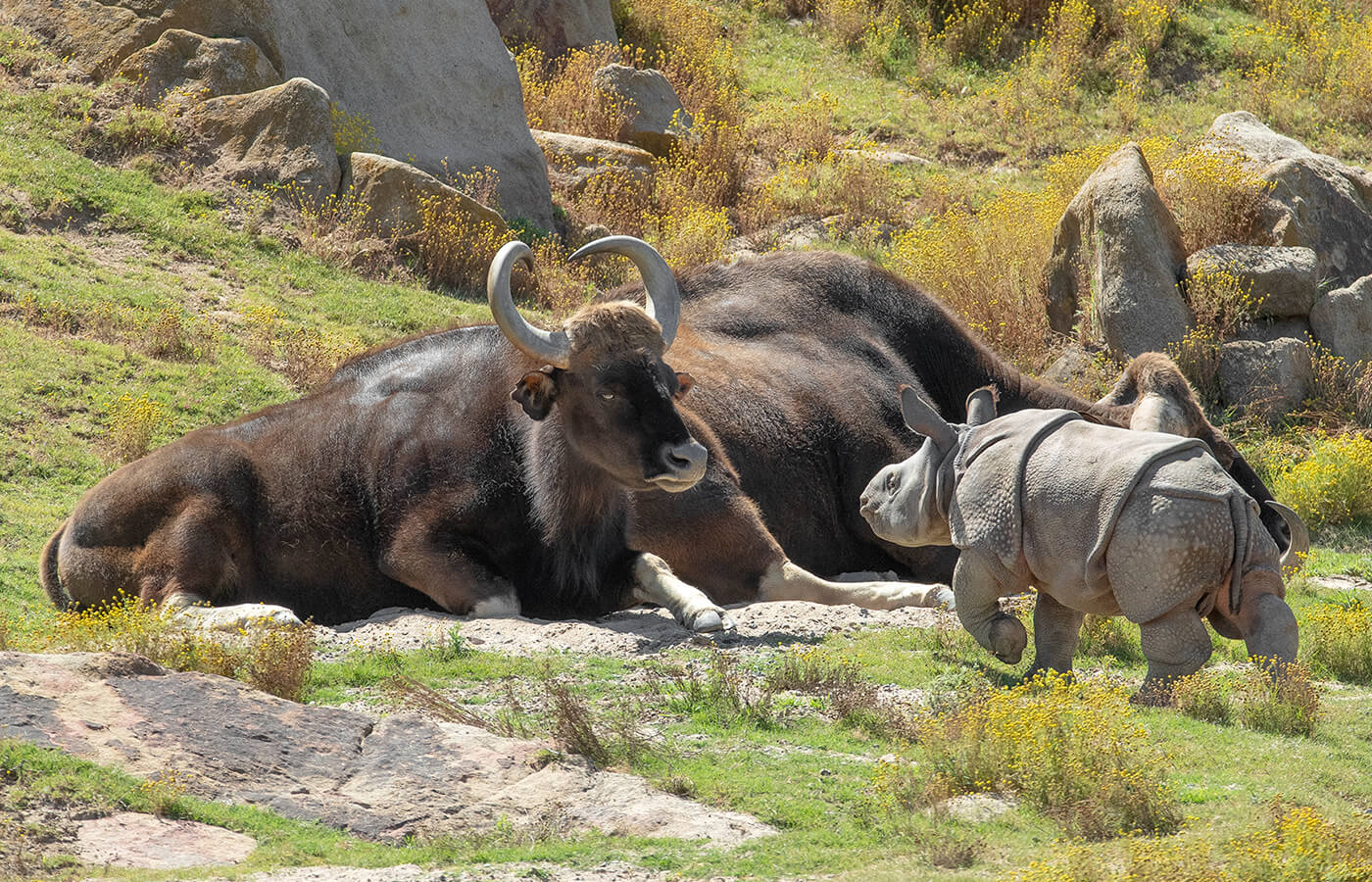
HOWDY, NEIGHBOR
Once he got the feel of the habitat, Arjun began checking out the neighbors, like this pair of Indian gaur.
On May 20, 2020, habitat gates were opened, and as animal care specialists carefully observed, the littlest rhinos ventured out with their mothers into a 40-acre habitat. Tanaya and her female calf stepped out first. Together, they made use of a mud wallow, then headed out to explore the rest of the area. Not far behind them, Asha led her male calf, Arjun, farther onto the savanna, exploring the grassy hills. With curiosity fueling a bit of boldness, he ventured several feet away from Asha. But when he came face to face with one of his new neighbors, a Javan bantang, he quickly returned to his mother’s side.
A Tower of Joy
A group of giraffes is whimsically referred to as a tower—and the tower at the San Diego Zoo Safari Park got “taller” this spring with the addition of two calves. The first calf was born on April 4 to first-time mom Zawadi. After a two-week bonding period, the young female stepped out with her mother to meet the other members of the herd, as well as the other wildlife in the East Africa habitat. While the little female explored her world, more than 18,000 human fans cast ballots in an online voting campaign to choose a name for her. On Mother’s Day, by popular vote, Zawadi’s daughter was named Zahara.
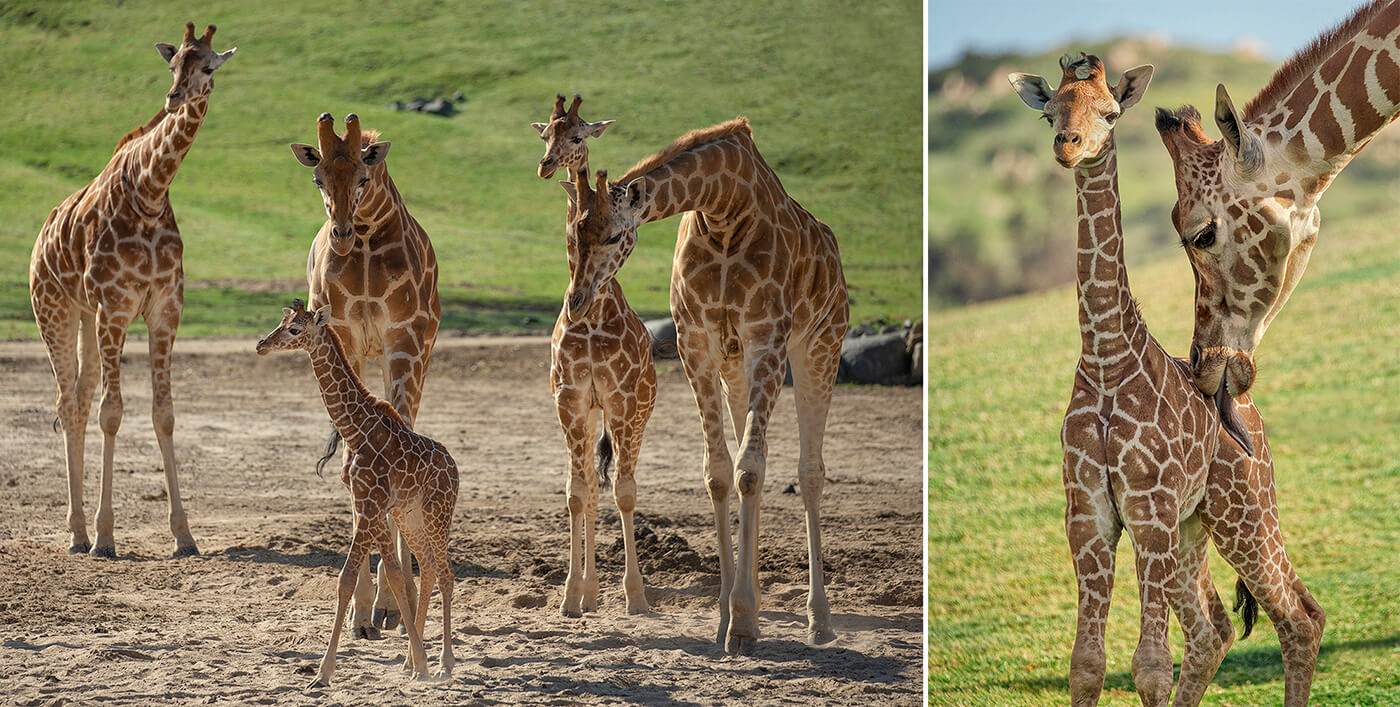
HERD LIFE
Zahara has many pairs of eyes looking out for her, but no one is as intent on her well-being as her mother, Zawadi.
Zahara is healthy, with terrific vitality and a highly relaxed demeanor. “This calf is so very calm and collected,” said Matt Galvin, lead wildlife care specialist at the Safari Park. “Not much bothers her. She is usually content to nap in the shade while the adults browse nearby. But we have also noticed that, on occasion, she does get overly excited and zooms through the savanna.” In mid-June, Zahara’s herd welcomed another giraffe calf, a male. Be sure to look for these two lanky youngsters on Giraffe Cam, and watch them grow!
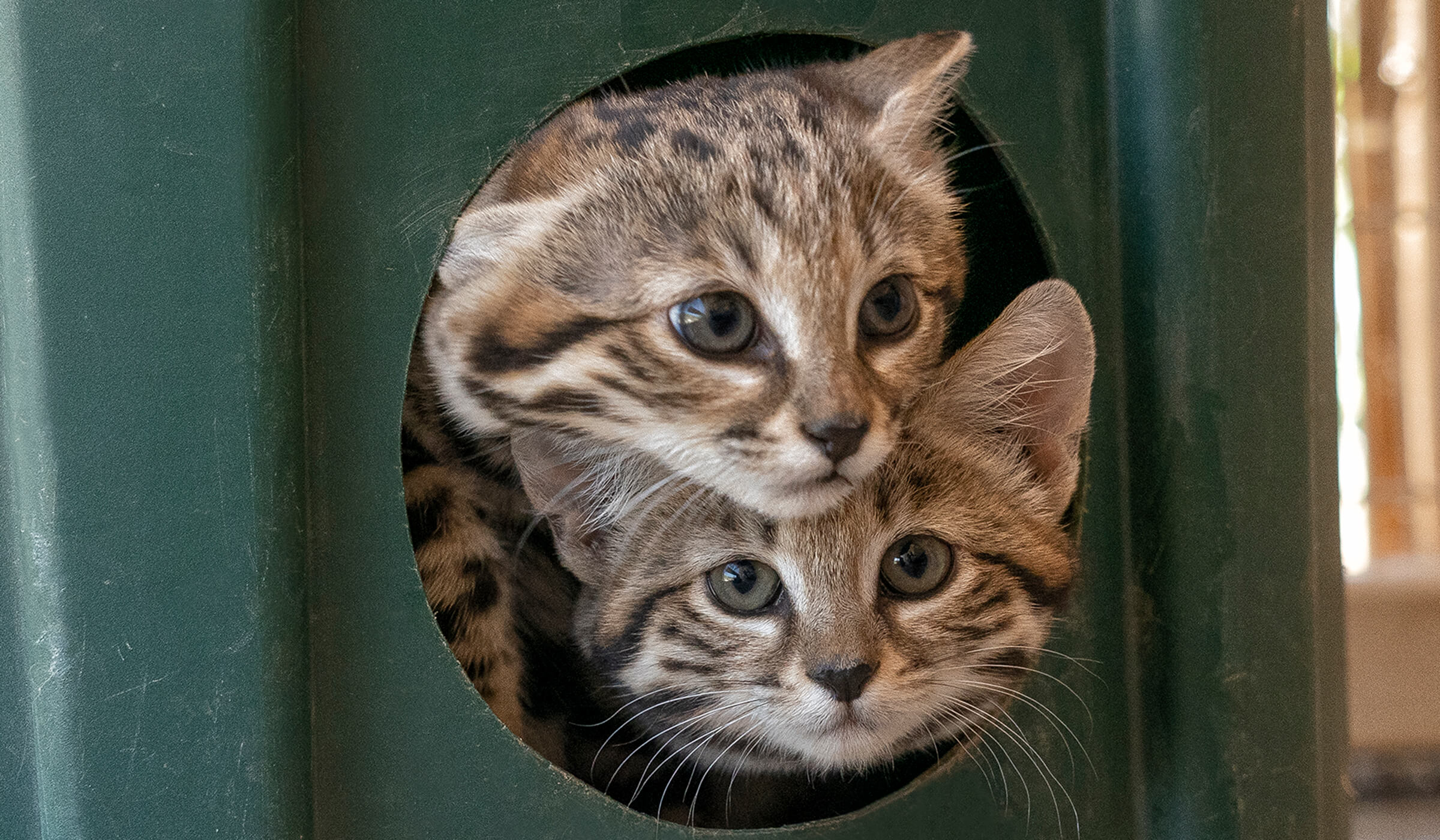
A Little Bit of Excitement
On April 28, 2020, the staff of our Carnivore Breeding Center near the Safari Park watched in wonder as Arwen, a black-footed cat, gave birth. “She started showing signs of labor around noon,” said Dion Rice, senior wildlife care specialist. “The first kitten, a male, was born about an hour after that—and after another hour, Arwen delivered a little female.” Cameras in the den and the yard give the staff a chance to marvel at Arwen’s mothering skills.
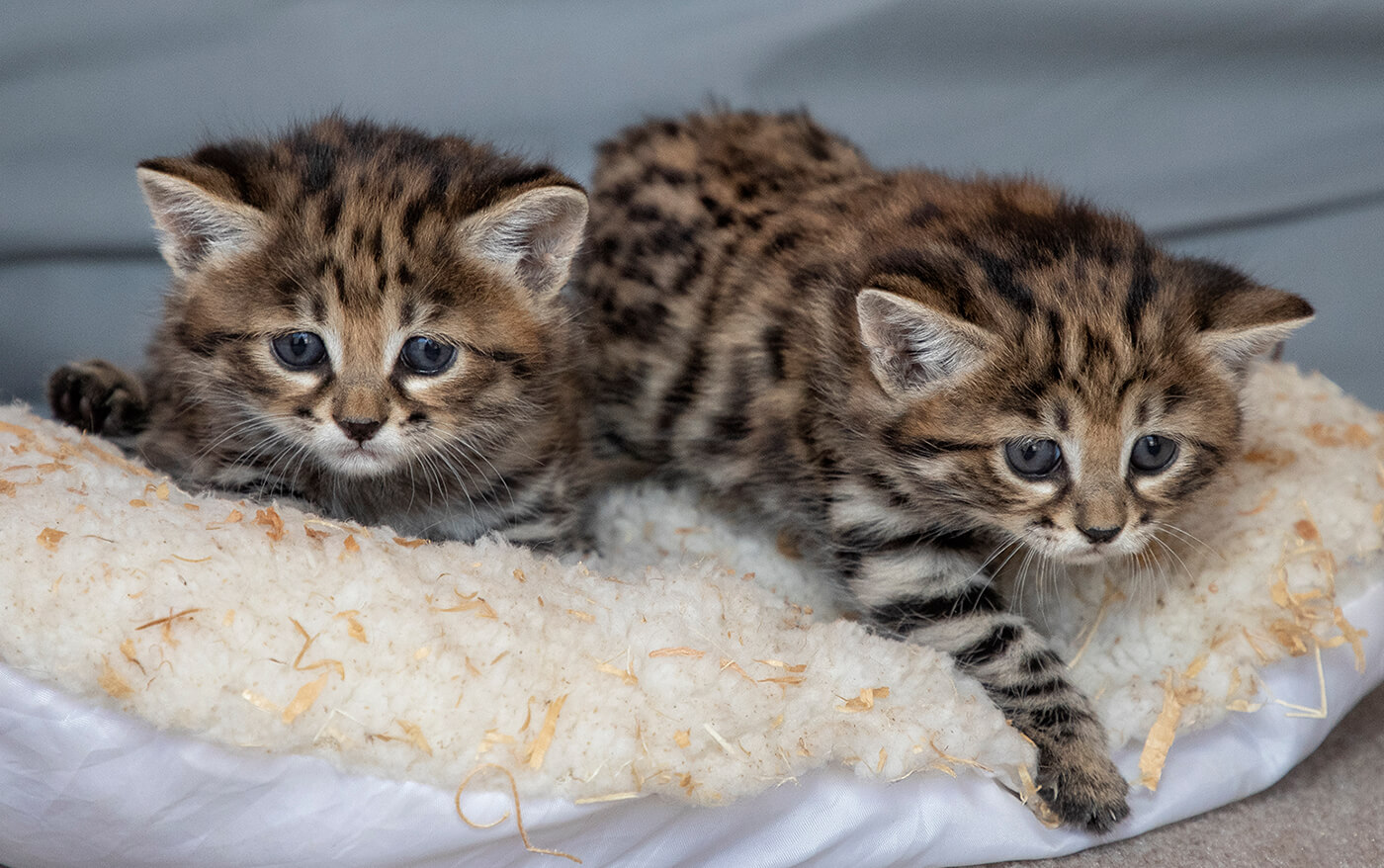
DOUBLE DELIGHT
Watching the black-footed kittens develop their cat-skills is fascinating, and helps add to the knowledge base about the species.
At about four weeks of age, the kittens started exploring outside of the den. They climb, but haven’t reached all the high spots—yet. According to Dion, “Arwen watches them carefully; if one gets too high, in her estimation, she makes the kitten come down.” Dion added that the Park is one of a few facilities to have welcomed kittens this year, and that “There is little information on the growth and development rate of the young.” Our ability to observe and track that development helps build an understanding of this small, secretive wild cat.
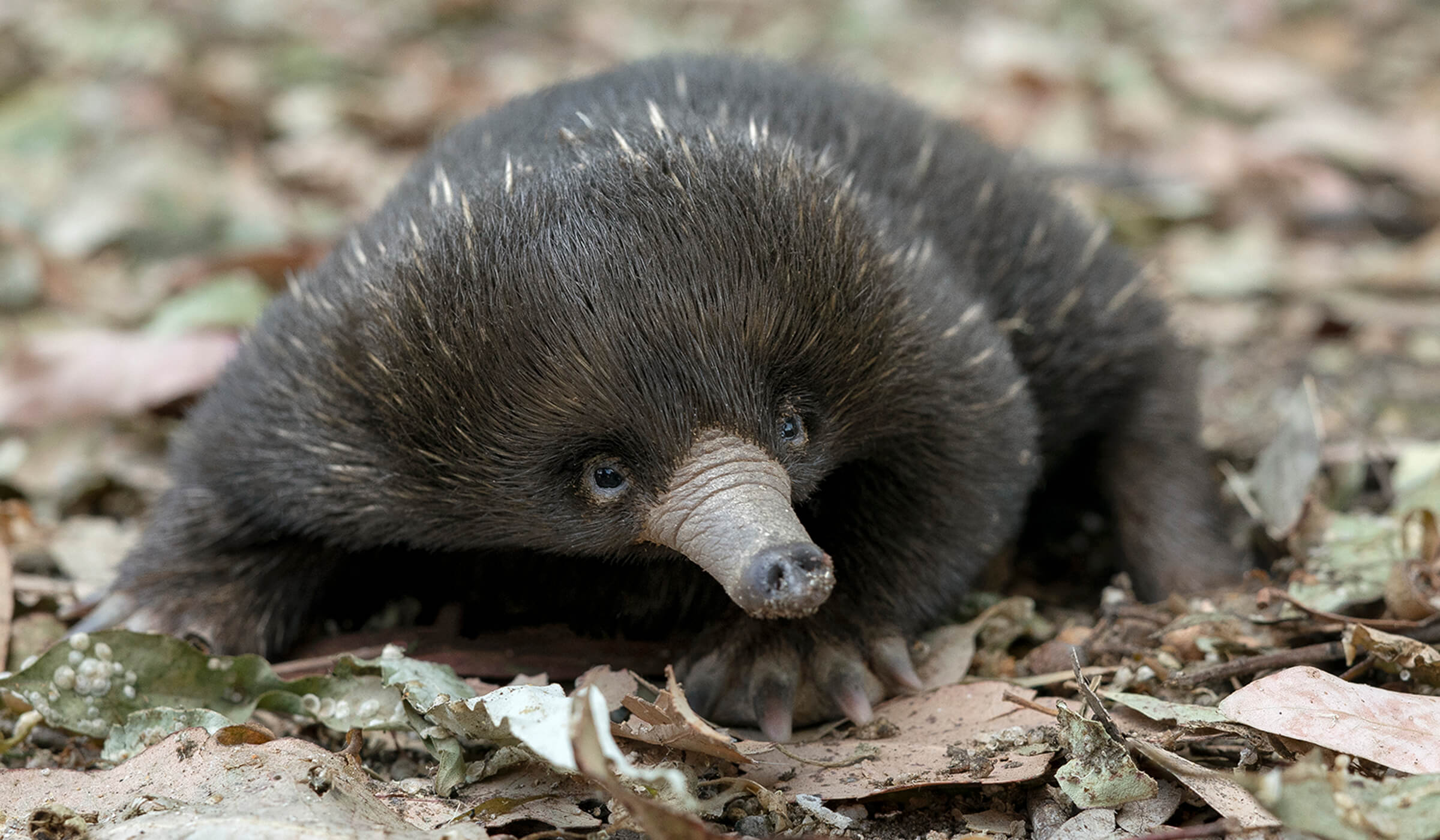
The Marvelous, Mysterious Puggle
In San Diego Zoo Global’s 103-plus-year history, we’ve welcomed many animal offspring, but one that appeared last February was new to us—an echidna baby, known as a puggle! Echidnas are egg-laying mammals from Australia and New Guinea. The puggle’s parents live in the Safari Park’s Walkabout Australia habitats.
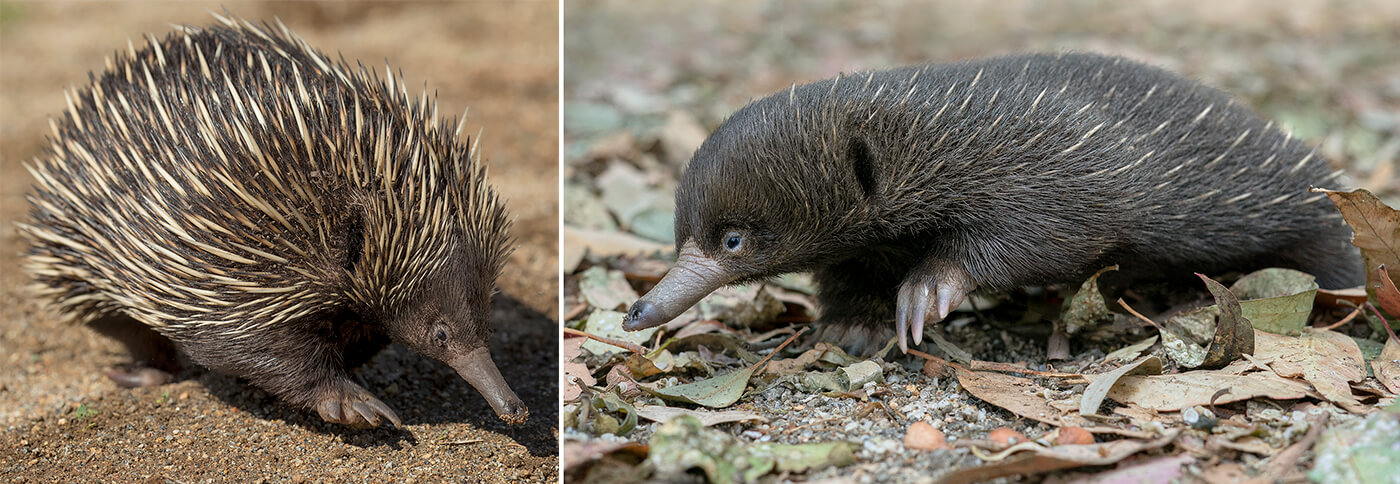
THE TIP OF THE SPIKE-BERG
Smooth-skinned at birth, puggles grow dense fur that keeps them warm, then begin sprouting the paler, sharp spines (right). At adulthood (left), the spines become more prominent and the fur serves as an undercoat.
Female echidnas lay a grape-sized egg, then hold it in an abdominal pouch. After hatching, the vulnerable baby remains in mom’s pouch for a couple of months. Our female (named Orange) and male (named Shaw) had been introduced as part of a breeding project for the last two seasons, and although Orange had appeared to have gone through an incubation period, not emerging for a couple of weeks, it wasn’t until later that the existence of the puggle was confirmed. The puggle was discovered, with great excitement, in Orange’s pouch during a veterinary examination! “It is an honor to care for these animals, and especially to learn more about this species’ reproduction through this puggle hatching,” said Savanna Smith, wildlife care specialist at the Park. Over the past months, the Walkabout Australia team has watched, documented, and marveled at the puggle’s progress.
The little one began developing the spiky spines adults have, at around six to eight weeks of age. At this point, Orange placed the puggle in a nursery burrow and left it on its own, returning to nurse her baby every three to six days, as has been seen with other echidna moms. Eventually, with protective points covering its back, the puggle start venturing out, too. Savanna and her team watched this puggle expand its horizons in late June—a little wobbly, but getting stronger every day!
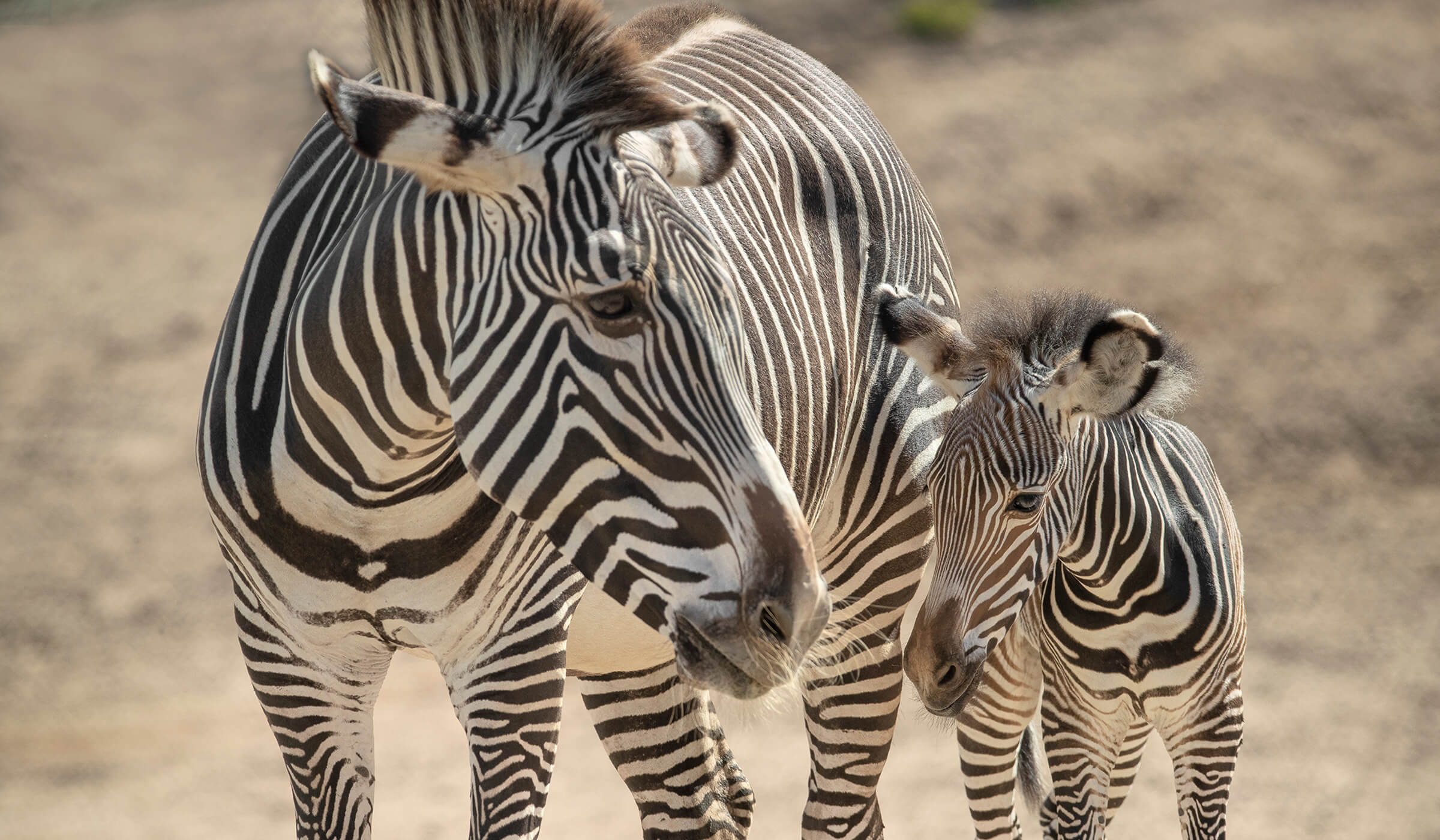
Foal in the Field
On May 22, the Safari Park gained some stripes—as in zebra stripes. Knowing that Leia, a six-year-old Grevy’s zebra, was expecting her first foal, the staff made her comfortable in a maternity area where she and the herd could see, hear, and smell one another, but she would have a quiet place to give birth. When staff arrived at sunup, Leia was grooming and nursing her foal. “Ideally, we do an up-close health assessment within the first 24 to 48 hours,” said Tommy Jordan, a wildlife care supervisor at the Safari Park. “But we also want the mare and foal to bond, so we try to wait.” When the team was able to first weigh her on June 5, Leia’s daughter weighed 128 pounds (Grevy’s zebra foals typically weigh between 80 to 120 pounds at birth). The as-yet-unnamed foal has joined the rest of the herd, and is quickly learning what being a zebra is all about—you might say she’s learning her lines.
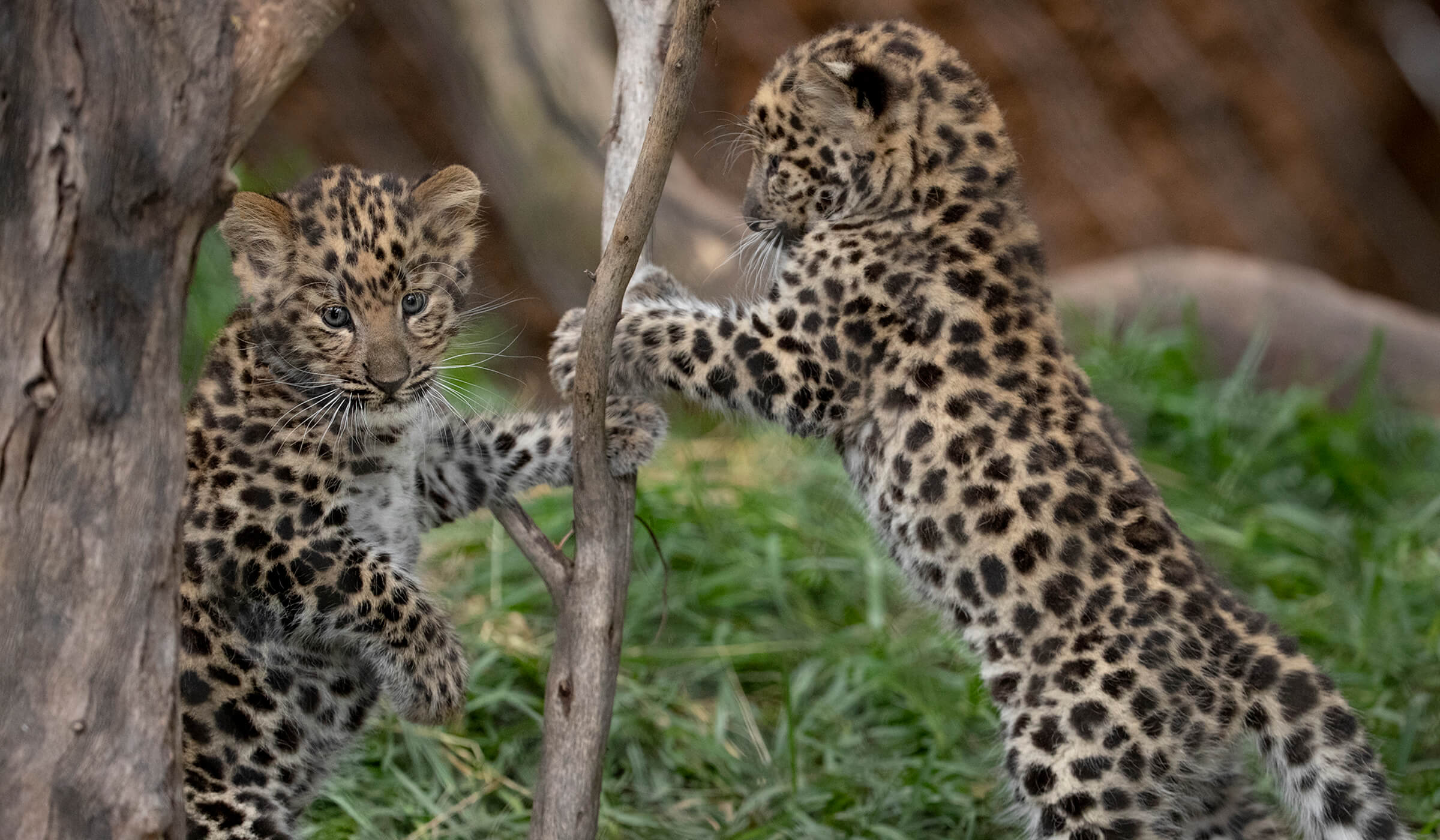
Meanwhile, at the Zoo…
The month of April brought the squeaks and mews of Amur leopard cubs to the San Diego Zoo. This was mom Satka’s second litter, and she was “rocking” it! “While she’s still very protective, her first-time mom jitters have subsided—but she’s still very much alert,” said Kelly Murphy, senior wildife care specialist. As the result of a poll of the Zoo’s Facebook fans, the cubs have been named Lev (meaning “lion”) and Tuman (meaning “fog”).
Livestreaming cameras throughout the living spaces give staff a way to monitor Satka and her cubs. Kelly shared that as the cubs have become more mobile, Satka has had her paws full. “We review footage every day, and I catch myself laughing out loud watching her with the cubs,” she said. “She’ll be in one room, and a cub takes off toward the door. Satka gets up to bring it back. And as she’s dealing with that cub, the other cub has wandered halfway out.” Kelly noted that “Overall, Satka’s allowing them the opportunity to explore, but being protective—it’s a good balance.”
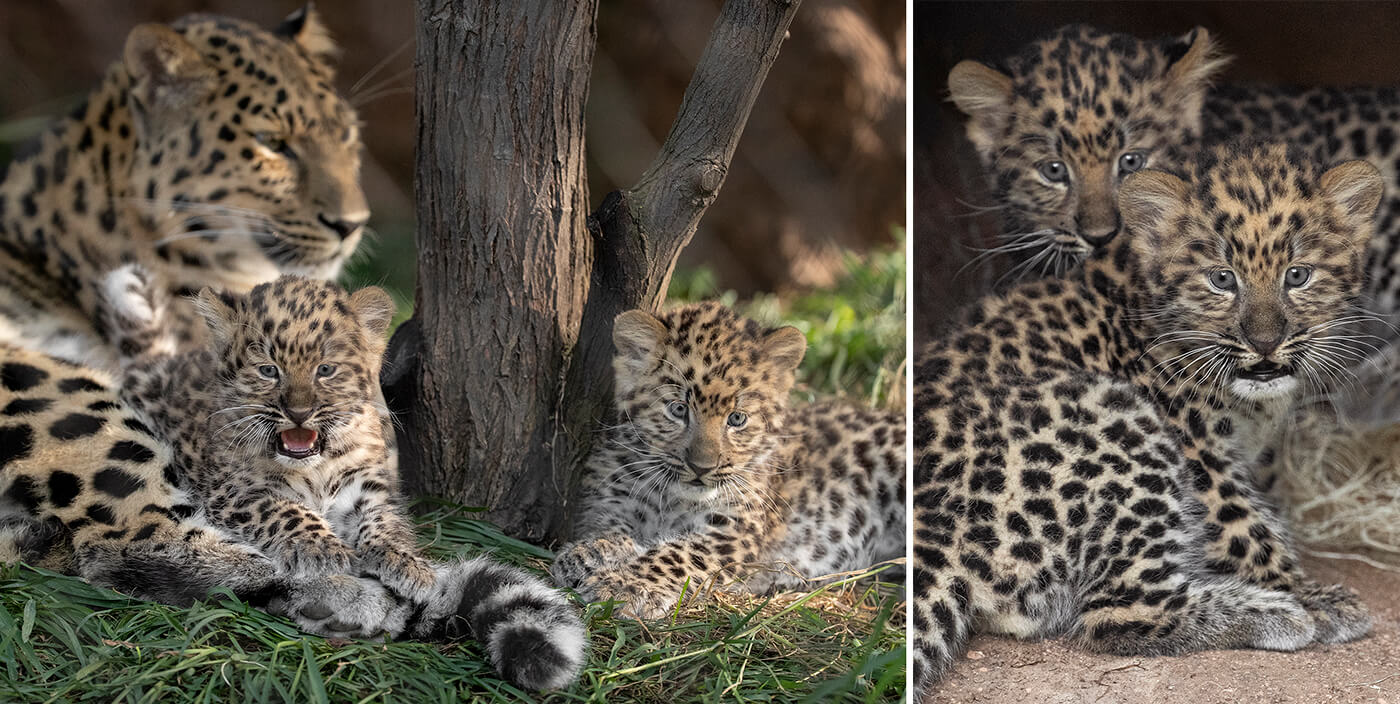
SPOT ON!
Satka’s two cubs are growing, active youngsters that thrive under her excellent mothering skills.
Amur leopards are the rarest of the big cat species on the planet. This species was once found in northeastern China, Russia, and the Korean peninsula, but those populations have been decimated, due to loss of habitat and poaching for their thick, spotted coats. We are proud to join with other organizations to conserve this species by taking part in the Global Species Management Program—an international conservation effort in which scientists work to increase regional animal populations. Guests can see Satka and her cubs in the Conrad Prebys Africa Rocks area at the Zoo. (While these endangered cats are from Asia, in our Zoo population, they represent leopards from ecosystems in Africa and the Middle East.)
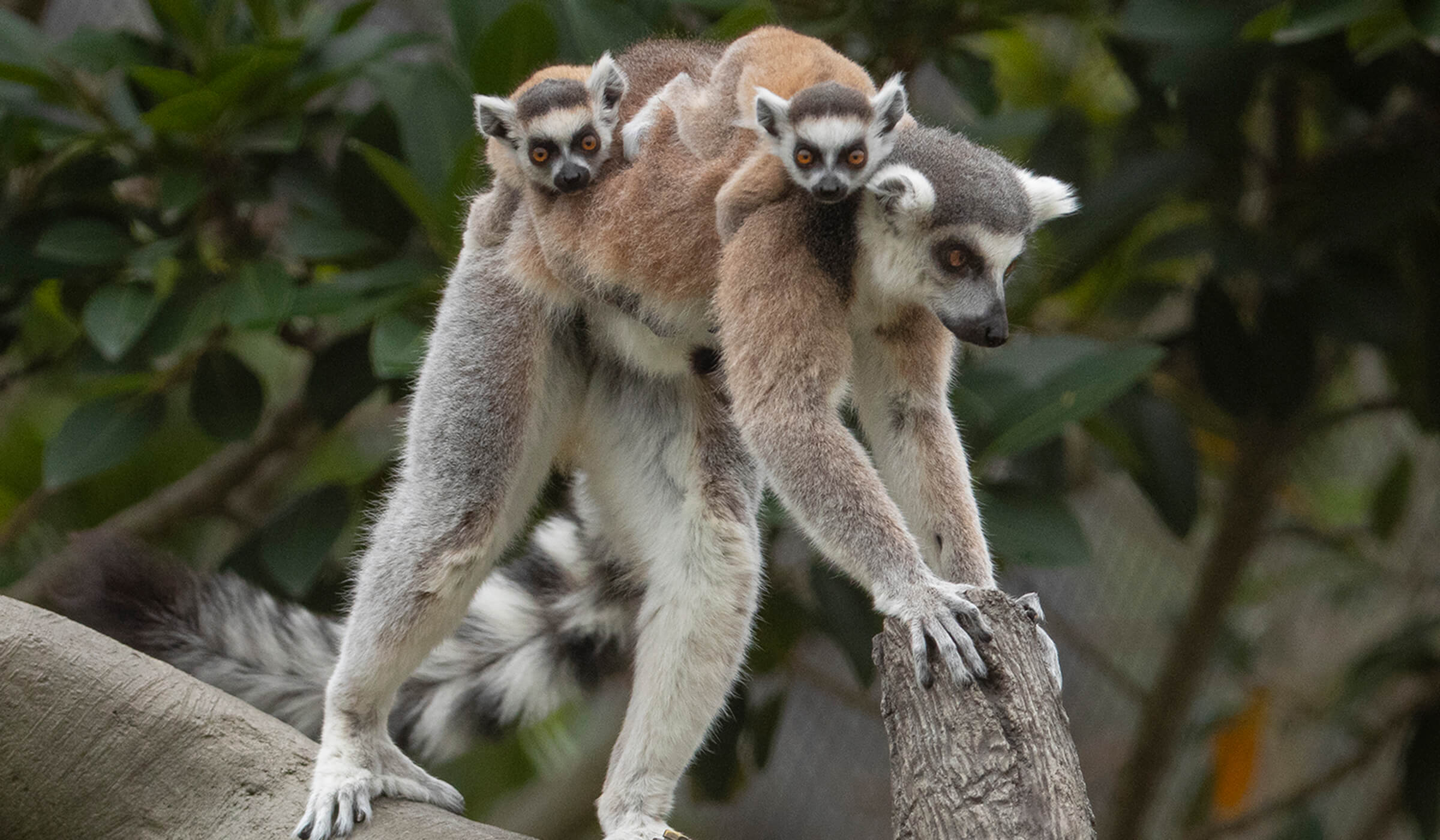
Growing Up Lemur
In a different part of Africa Rocks, two ring-tailed lemurs born in late February have continued to grow and thrive. “They know how to groom themselves and others,” said Yeleny Smith, a senior wildlife care specialist. “Each twin has an ‘auntie’ they go to for allogrooming. The little male, Tsiky, tends to allogroom with favorite female troop member, Taz. His sister, Meva, usually pairs up with Shabazz.”
As with most youngsters, play is the young lemurs’ prime activity. They explore different trees in the habitat, and they are figuring out how to sunbathe by mimicking the adults. Whether it’s bouncing around the exhibit or eating leaves from the trees, these two have confidence in themselves to explore on their own—and that their troop will help them when needed. That’s the best way to grow!
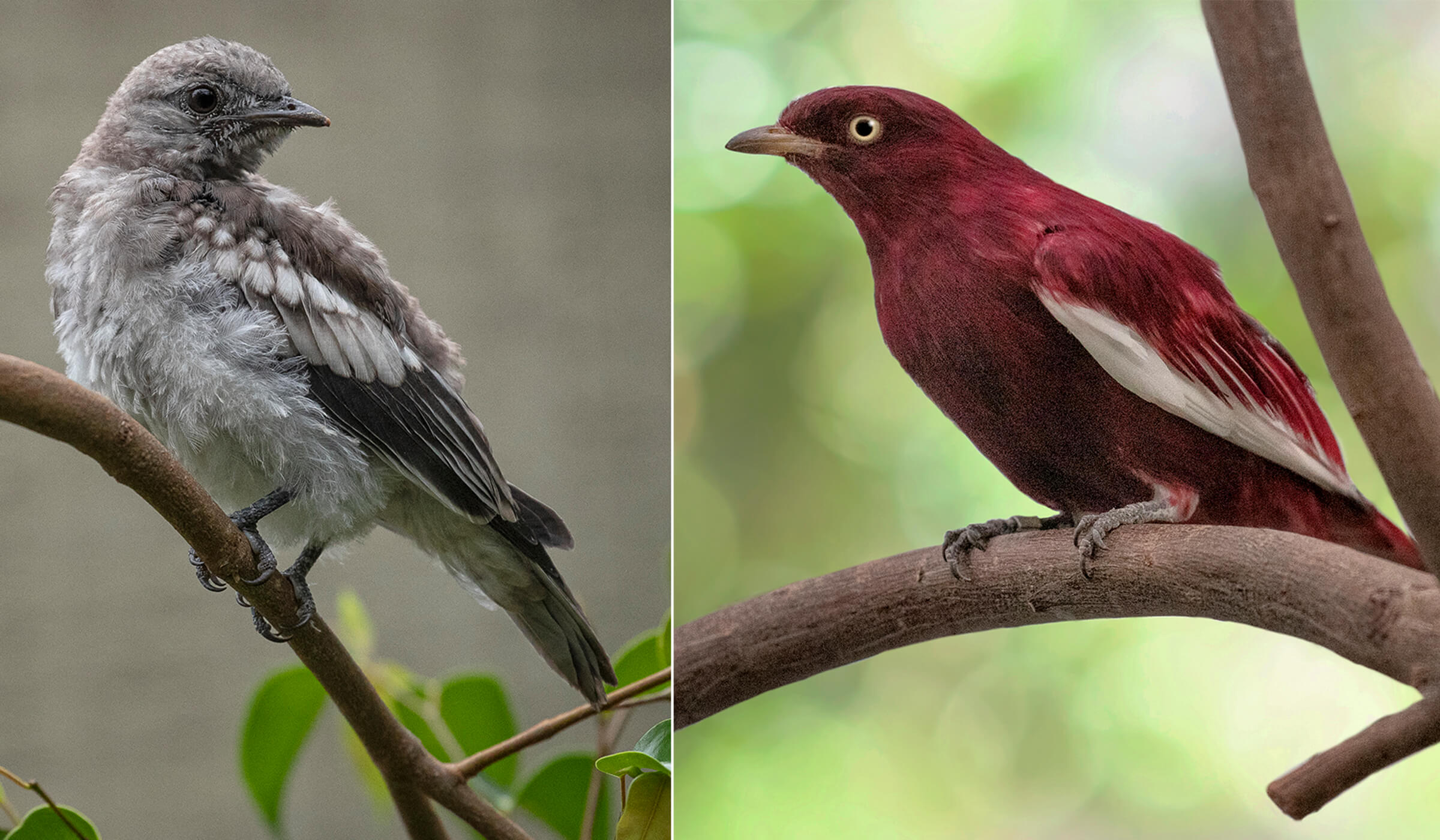
A NOTABLE HATCH
Animal care specialists at the Zoo’s off-exhibit Avian Propagation Center were thrilled this spring when a pair of pompadour cotingas hatched and raised a chick. It was a first for the species at the Zoo, and we’re all looking forward to seeing the little one (left) achieve its stunning adult color (right).


